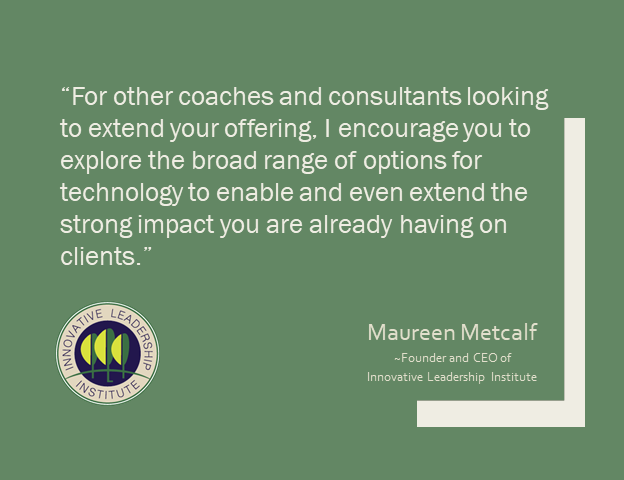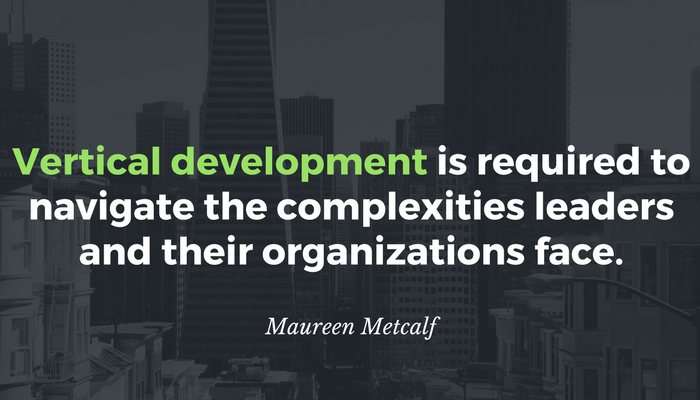Boost Your Workplace Productivity and Well-Being with Joyful Leadership
Maureen Metcalf, founder and CEO of the Innovative Leadership Institute, shared this article as a companion to her podcast with Dr. Pamela Larde, a professor, coach, award-winning author, and founder of the Academy of Creative Coaching, Working & Living in Joy.
| Intro from “FauxMo:” Maureen’s digital twin and AI experiment. | Link to the entire interview: |
Listen to the companion interview and past episodes of Innovating Leadership, Co-Creating Our Future via Apple Podcasts, TuneIn, Stitcher, Spotify, Amazon Music, Audible, iHeartRADIO, and NPR One.
By integrating elements of joy into the workplace, leaders not only create an environment where employees feel respected and valued, but also where their personal and professional lives can flourish. This, in turn, translates to increased workplace productivity and a more positive company culture, making the cultivation of joy-infused spaces and activities something every leader should prioritize.
Here are some ways to create joy at work:
1. Cultivate self-awareness and emotional intelligence
By tuning into your emotions and reactions, you can create a more supportive and uplifting environment for your team members. Developing emotional intelligence and self-awareness allows for a better understanding of your strengths and weaknesses and enables you to communicate more effectively with, and empower, your colleagues. The ability to pause when you feel overwhelming emotions, then reflect on them objectively, means you can engage with colleagues respectfully and productively, without expressing negative emotions that risk alienating colleagues. Moreover, regulating your emotions is an important behavior to model for your team.
2. Prioritize self-care and holistic well-being practices
Self-care and holistic well-being practices foster increased workplace productivity while also proving beneficial for one’s personal life. By encouraging a culture of self-care in the workplace, you can create an environment that supports mental stamina, resilience, and overall well-being for yourself and your team members. This may mean setting a limit on the number of meetings you have in a day, or making other small adjustments to your schedule to ensure time for self-care, such as scheduling dedicated times for practicing yoga. When people prioritize their own self-care, they are better able to focus on tasks, make informed decisions, and engage in more positive interactions. This positive environment, in turn, leads to increased participation, creativity, and a willingness to collaborate, all of which contribute to the organization’s success. These well-being practices are also foundational to building self-awareness and emotional intelligence.
3. Encourage open communication and team support
This has a twofold effect; it allows employees to share joyful experiences, which in turn spreads these positive emotions throughout the office, and it encourages team members to lend support to one another when facing challenges. Open communication and team support are vital components in cultivating a positive work environment and nurturing the overall well-being of employees. There is great value in building a community that fosters joy and provides a safe haven for individuals to express their emotions openly. This psychological safety not only builds stronger relationships between team members, but also garners greater facilitation of ideas and innovative solutions, higher job satisfaction, improved performance, and increased employee retention. Avoid talking over colleagues, be conscious of how you respond to perspectives which you may disagree with, and encourage everyone to express their emotions rather than bottling them up.
4. Celebrate achievements and express gratitude
Thank colleagues for their work and contributions to the team. People feel valued when they know their leaders and colleagues are appreciative of their work. This also prevents team members from becoming disengaged and empowers them to feel that their work is meaningful. Think of the joy you’ve felt when someone thanked you in an extra meaningful way, then set a goal to emulate that act of gratitude with your team members.
5. Create joy-infused spaces and activities in the workplace
Offer spaces for team members to gather and get to know one another outside of a project, offer periodic fun or relaxing activities, and give team members the space to set boundaries which contribute to their ability to create joy. This can start with leaders emulating this adherence to personal activities which create joy. Rather than succumbing to a belief that joy has no place at work, remember that our professional and personal lives are intertwined. Being able to nurture healthy behaviors in both areas is crucial to making meaningful relationships in and outside of work. Turn on some music between tasks to encourage yourself to get up and move around, set times throughout your day to walk or to read a chapter of a book, etc. Intentionally create joy by giving yourself the proper space to make it.
By incorporating a culture of joy and support in the workplace, leaders enable individuals to thrive and reach their full potential. Creating joy in the workplace not only boosts morale but also enhances overall productivity, meaning that joy has a significant place in the success of an organization.
These strategies don’t have to be implemented overnight. Try to give more thanks to your team members for their work and for showing up to participate in the success of your organization. Ask some trusted friends or colleagues to establish a check-in group, wherein you can send out ‘SOS’ messages when you’re struggling, and your community can rally around you. Set limits on meetings and dedicate a certain amount of time each day to something that is certain to boost your mood. Don’t hesitate to put these strategies into practice and experience the positive effects of a joy-centric workplace firsthand.
Have you tried any of these tactics and strategies? Share your successes and challenges with us in the comments.
ABOUT THE AUTHOR:
Maureen Metcalf is the founder and CEO of the Innovative Leadership Institute. She is an expert in anticipating and leveraging future business trends. Ms. Metcalf helps leaders elevate their leadership quality and transform their organizations to create sustainable impact and results. She captures 30 years of experience and success in an award-winning series of books used by public, private, and academic organizations to align company-wide strategy, systems, and culture using Innovative Leadership techniques. Ms. Metcalf is a Fellow of the International Leadership Association. She also serves on the advisory boards of the School of Strategic Leadership at James Madison University and the Mason Leadership Center at Franklin University. Ms. Metcalf earned an MBA from Virginia Tech. She can be reached at mmetcalf@innovativeleadership.com.
NEW RESOURCE:
Starting Sunday, June 25, we will pilot an additional resource called “Leading Edge 120.” Each post will contain one 120-second video looking at a top story from the prior week’s news – but through a leadership lens. The intent is to keep you current as a leader in an easily digestible format. Our first round-up from last week is about the latest Gallup report tracking continued worker disengagement.
Thank you for reading the Innovative Leadership Newsletter by the Innovative Leadership Institute, where we bring you thought leaders and innovative ideas on leadership topics each week.
ADDITIONAL RESOURCES:
Ready to measure your leadership skills? Complete your complimentary assessment through the Innovative Leadership Institute. Learn the 7 leadership skills required to succeed during disruption and innovation.
- Follow the Innovative Leadership Institute LinkedIn page
- Subscribe to Innovating Leadership and listen on your favorite podcast platform
- Subscribe to our blog – Insights
Check out the companion interview and past episodes of Innovating Leadership, Co-Creating Our Future via Apple Podcasts, TuneIn, Stitcher, Spotify, Amazon Music, Audible, iHeartRADIO, and NPR One.


 This post is a companion to the podcast featuring
This post is a companion to the podcast featuring